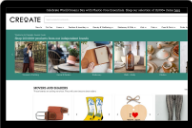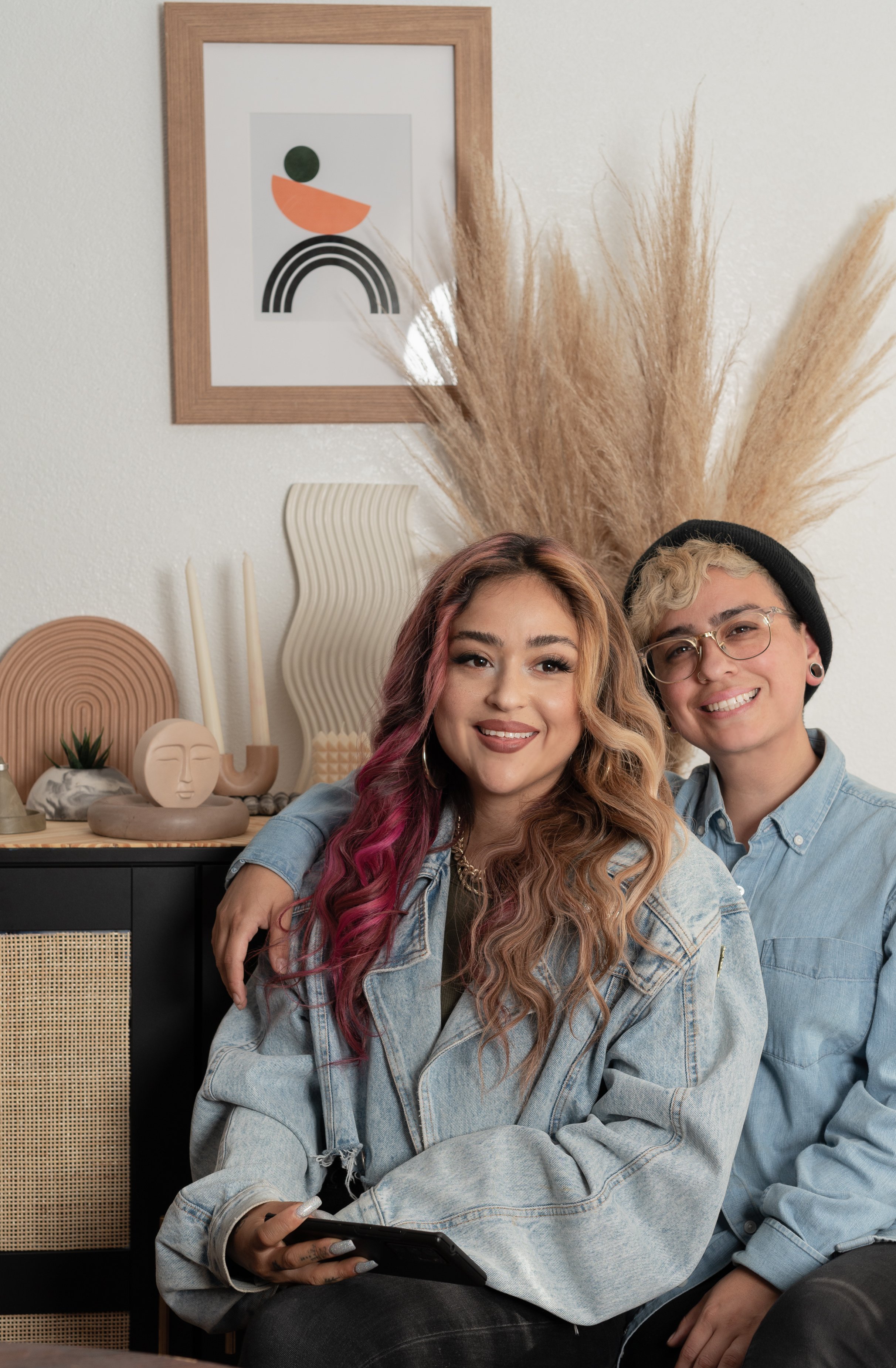Founded in late 2013, The Owlery began as an outlet for Printmaker Benjamin Partridge's misplaced creativity. Drawing from nature for inspiration, Benjamin specialises in screen print and surface pattern design, creating home and giftware in a range of colourful designs, featuring a variety of creature patterns.
Hi Benjamin, please introduce yourself! Where did your career as a textile artist begin, and how did you get into printmaking?
.jpg?width=708&name=Benjamin%20Partridge-080219-436%20(1).jpg)
I somewhat fell into running my own business, honestly. I have a background in Psychology and worked as a teacher of children with Special Educational Needs for some time, and then started to play with print as part of a teacher training course. From there, I started to develop my own skills over a few years before taking the leap to start selling my own work. My love of textiles is more deep-rooted, as I always enjoyed working with textiles from a young age. My grandmother was a keen knitter and sewer which sparked some interest. It’s a pretty forgiving medium too, as if you do something wrong you can just unpick it and start again.
Please tell us more about your nature-inspired home and giftware business. How did The Owlery come about?
The Owlery came about initially as a way of channelling some misplaced creativity. As a teenager, I was a keen musician. However, through my early to mid-20s I had no creative outlet, so starting to play with print and textiles again. The Owlery was born out of this need to be creative and channel this frustration.
Have you always been interested in homewares and/or interior design? What drew you to creating designs for these kinds of products?
For me, there is no greater joy than being able to curate a space in your home. It might take time to get it right, but when you find that perfect combination of colours, patterns, and textures, then you have a space to be proud of and that you want to show off.
I haven't quite got there with some of the spaces in my house, but I really enjoy the ever-changing process of working towards the perfect space. My range started with statement homeware pieces that would bring a pop of colour into someone's home. From there, it has diversified significantly, but it brings me a lot of joy to know that my work is sitting proudly in someone's home, helping them to shape a space that represents them.
What has been your biggest challenge so far with running The Owlery?
Expansion. It is always tricky. There is a cost to building a business, and over the past few years that has been a challenge, but there has also been a lot of success. I have taken on a part-time studio assistant to help with the workload and that has been one of the best decisions I have ever made. Jo is an invaluable hand in the studio who contributes to all aspects of the business. We are able to be as efficient as ever when it comes to process work and building stock, which is also usually another challenge as most products are handmade in my Sheffield studio, and take a significant period of time to execute.
What does a typical day look like for you?
I have to confess I am a bit of a night owl (pun intended) — so I prefer a slightly later start before heading to my studio in Yorkshire ArtSpace in Sheffield, which is about a 15-minute drive from my house. It is usually then a mix of sewing stock, packing orders and watching Netflix. I think I may have completed Netflix about 4 times over — I use it as a healthy distraction.
However, on days when I need to work on the website or other digital tasks, I will usually work from my home office which has just had a bit of a makeover. I am lucky to live right next to a beautiful stream and an active garden full of birds, so I am usually less productive than I would like and end up watching the bird feeder!
Could you describe your creative process? From inception to creation, how long does the process take?
This is tricky. Some products will be designed and prototyped in a day, some take weeks. From sketch, to print, to pattern, to photography, to sewing enough stock for the season takes about a year. I usually start before Christmas with the print design work and hand screen print a batch of prints, before then transferring them to photoshop to start creating repeat designs.
I sometimes have to sit on things for a few weeks to make sure that I still like them after that much time has passed. I then usually batch print the fabric with a production partner using a digital process, as this is more eco friendly and less wasteful, but does take time to produce. Following this, I usually spend a few months making small batches of each product and having them photographed ready for launch in September, which is when I usually launch every new collection. It is a very long process, and some years I am more ambitious than others, but it seems to work for me.
How do you decide which creatures to include in your work? Are you drawn to any natural motifs, plants, or animals in particular when it comes to creating new designs?
It feels a bit cheesy to say that I have always had a fascination with the natural world, but it is true. As a child, I was obsessed with books about animals and as an adult, I live in Sheffield, one of the greenest cities in the UK, right on the edge of the peak district so there is an abundance of nature right on my doorstep.
I spend a fair bit of time swimming in rivers and lakes in the peaks, so much of what I decide to include starts there. I started with British mammals and slowly started developing a collection of bird prints. Birds fascinate me more than anything. I am drawn to the diversity in shape, size, colour, and patterns. For a print designer, this is the perfect muse.
What are some of your favourite products to create, and do you have a soft spot for any particular designs?
I definitely have a soft spot for the bee design. This was one of the first pattern designs I created and it is beautifully simple and effective.
During 2020 I put out a collection of 4 bird designs — bullfinch, blue jay, wren and waxwing and I was really proud of these 4 and how they sat together as a mini collection. In terms of products, I really love the hot water bottles. They are a best seller and I just simply love making them.
How would you describe your personal home style, does it parallel that of your designs?
Surprisingly, no! I used to have quite a simple design aesthetic, mainly because I was surrounded by so much pattern and colour in the studio that I kind of wanted a different pace at home.
However, I have more recently embraced a lot more colour and have a bright yellow office space. I always get asked if I have a lot of my own work in my house and I do have a few pieces, however, I would rather buy from other makers. I spend a long time looking at my own work every day, so I like to fill my house with things from friends and other makers on the circuit.
How did the pandemic affect your business and what did you learn?
A lot had to change but overall it wasn't a terrible experience. There was a lot of good that came out of it. I used to do a lot of in-person events which obviously stopped for well over a year. This was happily replaced with sales online, but the main benefit for me was to have more uninterrupted time by myself in the studio.
At the time I had other work, but that dried up and it taught me that I can be self-sufficient, and can finish work that I had started almost 8 months previous. Crucially, it taught me that my business models worked. I have many different income streams that I have built my business around and this was essential to survive this time.
When/why did you decide to start selling your products wholesale, and how did this affect your business?
I have sold my work wholesale for a long time, but back then it was not hugely successful. I dedicated too much time to retail events, and it left too little headspace for wholesale.
More recently, however, I took the conscious decision to develop my wholesale presence and spent time developing new work which was ideal for a wholesale audience. This has had a tremendous effect on my business. I have significantly increased my wholesale client base not just nationally but internationally, and I love being able to foster those relationships with businesses across the world.
What would you recommend to artists looking to take the leap into commercializing their designs?
Shifting your business to meet the needs of a wholesale and more commercial audience is not an overnight task. It takes time. Sometimes this might be developing your own knowledge and skills, trying and learning from mistakes, developing your presence, photography, branding etc. Cut yourself some slack and take each step at a time. You will learn a lot through the process of doing this but it is a process. Don't compare your success or failure to others as this can be dangerous - judge your success by your own standards.
Thanks so much for speaking to us Benjamin. You can shop The Owlery wholesale with CREOATE, and follow them on Instagram here.
Not registered with CREOATE yet? Sign up now and start shopping wholesale with us today.
Related articles:
Browse Popular Categories at CREOATE: Wholesale Jewellery | Wholesale Gifts | Wholesale Stationery | Wholesale Beauty Products | Wholesale Mugs | Wholesale Homeware | Wholesale Pet Supplies | Wholesale Gourmet Food | Wholesale Garden & Outdoor | Wholesale Baby & Kids Products
Browse Trending Collections on CREOATE: Wholesale Halloween | Wholesale Mother's Day Gifts | Wholesale Father's Day Gifts | Wholesale Valentine's Day Gifts | Wholesale Spiritual Supplies
>> View all








